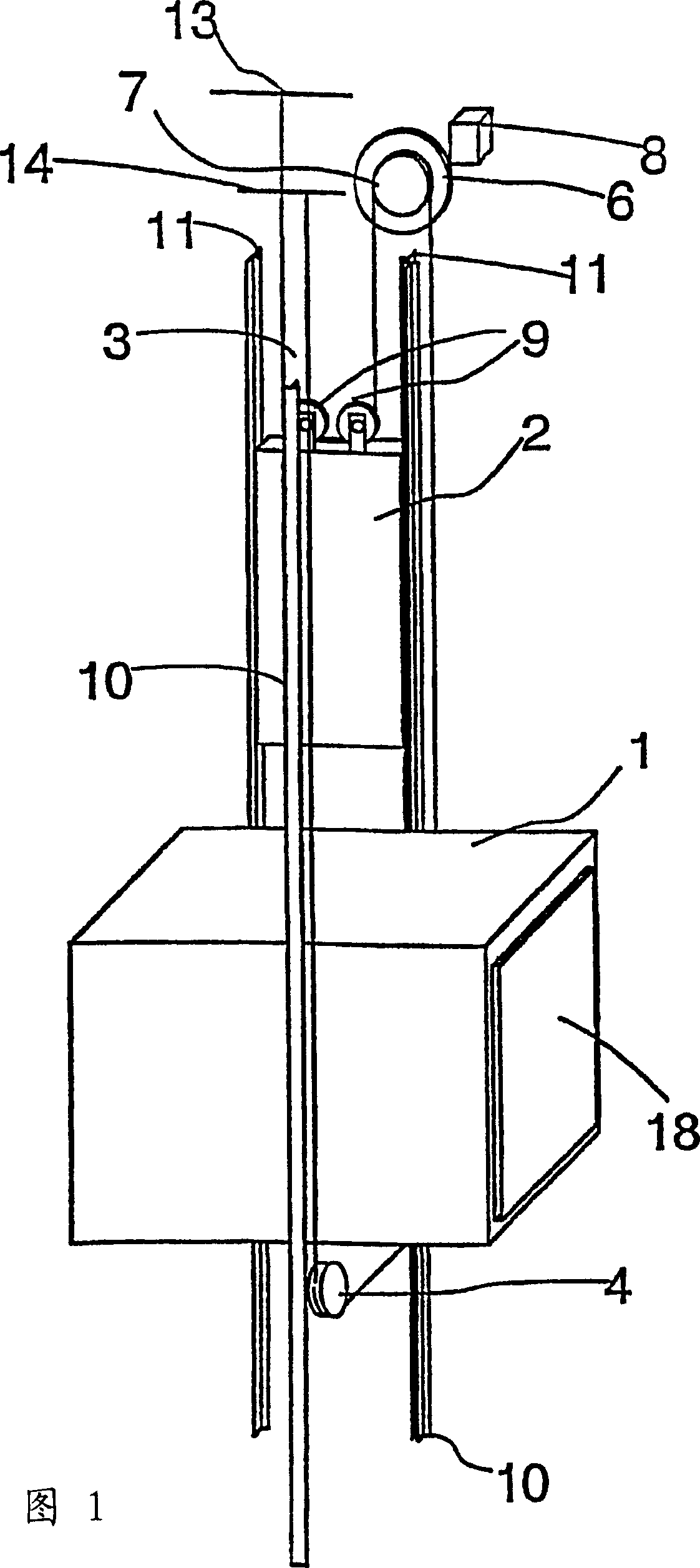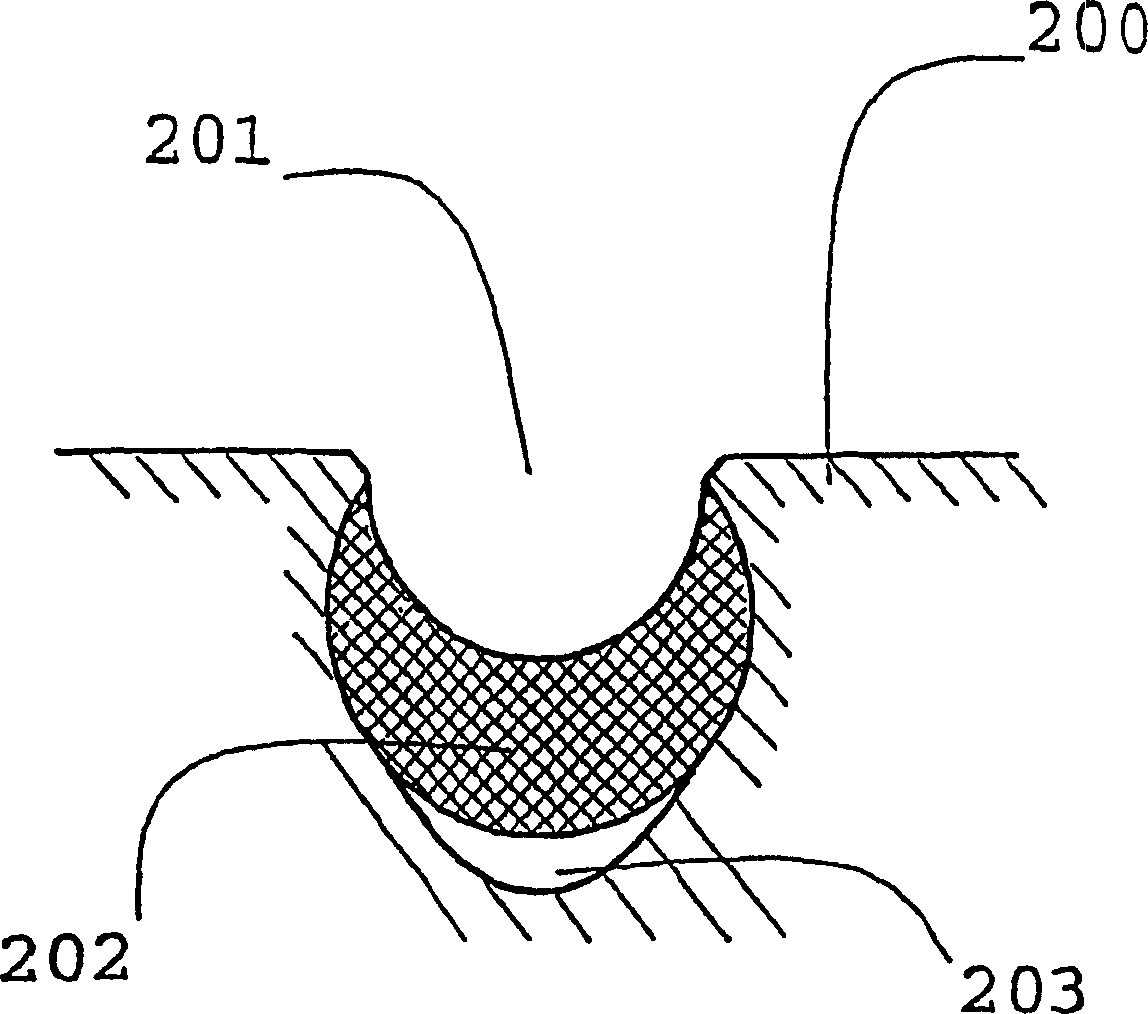Elevator and traction sheave of elevator
A technology for traction ropes and sheaves, which is applied in the field of elevators and elevator traction sheaves, and can solve the problems of elevator reliability changes and cost increases
- Summary
- Abstract
- Description
- Claims
- Application Information
AI Technical Summary
Problems solved by technology
Method used
Image
Examples
Embodiment Construction
[0024] Fig. 1 is a schematic diagram of the structure of an elevator. The elevator is preferably an elevator without a machine room, and the drive machine 6 is placed in the elevator shaft, although the invention is also applicable to elevators with a machine room. The hoisting ropes 3 of the elevator travel as follows: one end of the rope set is fixed fixedly above the track of the counterweight 2 moving along the counterweight guide rails 11, on the anchor seat 13 in the upper part of the shaft, from here, each rope goes down to The counterweight is suspended and rotatably connected to the deflection pulleys 9 of the counterweight 2, and from these deflection pulleys 9, the ropes 3 go up to the traction sheave 7 of the drive machine 6, along the Each rope groove goes around the traction sheave. From the traction sheave 7 the ropes go down to the elevator car 1 moving along the guide rails 10 of the elevator car, pass under it via deflection pulleys 4 for suspending the elev...
PUM
 Login to View More
Login to View More Abstract
Description
Claims
Application Information
 Login to View More
Login to View More - R&D
- Intellectual Property
- Life Sciences
- Materials
- Tech Scout
- Unparalleled Data Quality
- Higher Quality Content
- 60% Fewer Hallucinations
Browse by: Latest US Patents, China's latest patents, Technical Efficacy Thesaurus, Application Domain, Technology Topic, Popular Technical Reports.
© 2025 PatSnap. All rights reserved.Legal|Privacy policy|Modern Slavery Act Transparency Statement|Sitemap|About US| Contact US: help@patsnap.com



